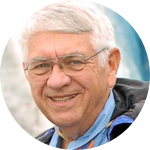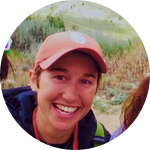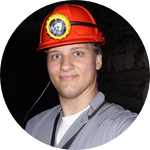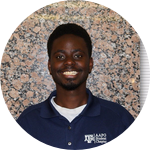Project Results
Dear project backers,
I am excited to share our new paper: "Using a non-invasive multiple-method approach to characterize rock glaciers in the periglacial critical zone: An example from the San Juan Mountains, Colorado" https://doi.org/10.1016/j.geomorph.2023.108585
The paper resulted from this project and is part of the special issue: SI: Geomorphology of the Anthropocene; Proceedings of the 51st Annual Binghamton Geomorphology Symposium
Free access until March 21, 2023 using this link: https://authors.elsevier.com/a/1gVpW,3sl3xERr
Raquel Granados Aguilar, Ph.D.
About This Project
Rock glaciers are alpine aquifers that store water for long periods of time. Many cities depend on water supply from mountainous river basins that include rock glaciers. Impacts of climate change include reduced precipitation and shorter snow seasons. Thus, river basins originating in mountains will have less available runoff. This research analyzes the mechanism of groundwater flow and the volume of water stored within rock glaciers using electromagnetic induction (EM).
Ask the Scientists
Join The DiscussionWhat is the context of this research?
Rock glaciers can have a matrix of ice (pore-ice or ice lenses) or a core
of ice, covered by angular rocks. The internal structure of rock glaciers allows them to have a slower response climate warming as the internal ice is insulated by the overlying mantle of rubble. There are complex relationships between inputs and outputs of ground and surface water within rock glaciers, as well as phase changes (solid-liquid) that complicate the ways in which groundwater flows. This project proposes to study these complicated relationships in selected rock glaciers in the San Juan mountains in Colorado.
What is the significance of this project?
The World Economic Forum placed catastrophes caused by climate change as the biggest threat to economy. In September 2016, the amount of CO2 (a heat-trapping gas) in the atmosphere went over 400 ppm. A milestone that makes it extremely difficult to prevent global temperatures from rising more than 2C (35 F). Although all environments are sensitive to impacts of climate change, alpine environments are especially so. Scientists estimated that over half of the alpine glaciers will disappear in the 21st century. Rock glaciers are one of the 3 sources of water in alpine environments. This research will characterize the internal structure of rock glaciers to evaluate their potential for water resources, while applying a new system for time-domain electromagnetic induction.
What are the goals of the project?
The wide distribution of rock glaciers in major mountain ranges of the
world makes them a significant option for water supply currently and in the future. This project aims to promote the conservation of alpine aquifers by raising awareness of the sensitivity of alpine regions to climate change. Highlight the importance of rock glaciers as water reservoirs. Define the pathways of groundwater and surface water flow within the selected rock glaciers. Determine the volume of ice and liquid water within the rock glaciers. Calculate the rate of ice melting in the area. Create a regional and local meteoric water line.
Budget
A large part of the expense for this project will be mobilizing us and the equipment to the study area. We will reduce costs by driving from Texas and camping at the site. However, we need funding to cover the costs of our field work:
- Renting vehicle
- Fuel for vehicle (from Texas to Colorado) and for ATV on site
- Camping fees, permit
- Meals for field assistants
We are in need of funds to feed the field assistants. We are expecting to have a group of 5 in the field for at least 12 days, as part of our first data collection field trip.
Endorsed by
Meet the Team
Affiliates
Team Bio
Raquel, Rodrigo and Taylor were part of the an international collaborative project. The results of such research were presented at GSA, 2015.
Cameron, Dennis and Maximilian are part of the undergraduate research team lead by Raquel at Texas A&M.
This project is unique by bringing together young scientists from around the world to work as part of an interdisciplinary team to tackle emerging problems involving water and energy resources.
Raquel Granados Aguilar, PhD
Raquel obtained her PhD in Geology from Texas A&M University in 2021.
Taylor Rowley
Taylor obtained her BSc in Geography from the University of Oklahoma in 2012. She went on to work for the Water Resources Board of Oklahoma studying surface water quantity and quality throughout the state. She decided to return to school to pursue her Masters in Water Management and Hydrological Sciences at Texas A&M University and received her degree in August 2016. Taylor is now starting her PhD in Geography at Louisiana State University. While at Texas A&M, Taylor joined the Geology and Geosciences Virtual Internship Program, and has been working with Michael Lilly from Geo-Watershed Scientific. As a result of this collaboration, Taylor was also a part of the Conference Technical Program and Planning Committee for the American Water Resources Association (AWRA) 2016 Spring Specialty Conference on Water-Energy-Environment Nexus. Taylor also collaborated with Dr. Giardino and Dr. Chris Houser as a co-author in a chapter of the book: "Principles and Dynamics of the Critical Zone", published in 2015, focusing on Periglacial processes and landforms.
Rodrigo Rodriguez
Rodrigo is a Senior Undergraduate Environmental Engineering student focusing on groundwater at the University of Guanajuato, Mexico. He has been researching in collaboration with professors Dr. Peter Knappett, and Dr. Rick Giardino from Texas A&M University, and Dr. Yanmei Li from Guanajuato University. His collaborative research has bee conducted in Mexico, studying groundwater geochemistry, specifically Arsenic and Fluoride since 2015. He has also been a visiting student at Texas A&M conducting laboratory analysis for soil samples using XRF and XRD equipment. His undergraduate research extends from publishing an article in the Journal of Chemistry and Chemical Engineering on “Apparatus Prototype for Purpose of Teaching in Bio-Digesters”, to Environmental audits in the Bajio industrial sector in Guanajuato, Mexico, as well as assessing the effects of drilling deep potable water wells in the Independence Aquifer on high metal and metalloids concentrations in groundwater.
Maximilian Witek
Maximilian is a Junior BS Geology student at Texas A&M University. He has worked in collaboration with the Institute of Oil and Gas- National Research Institute in Poland on many projects including preparing samples, running, and analyzing XRF, XRD, X-Ray Computed Tomography, GC/MS, Mercury Porosimetry/ Gas Sorption, and NMR as well as XMRI image analysis. He also worked to create a regional stratigraphy map covering close to 100,000 mi2 using Petrel, as well as made use of Matlab and Techlog to create pore overpressure prediction algorithms used to determine the correct density of drilling muds at a given site; this can help minimize or even prevent the drilling mud from entering the water table and contaminating it. He recently spent several weeks in the field evaluating an experimental method of locating subsurface faulting that common geophysical techniques are unable to detect relying mainly on the concentrations of subterranean near surface Radon gas.
Over the course of the project I hope not only to master the techniques used in EM research, but also the vast field experience that I will be a part of. I think that this will be a prime opportunity to be able to help with a project, starting from the early phases, and see it to its conclusion. There is also the practical matters of ensuring the instruments are available and functioning, devising a route, planning the “human” aspect of any expedition, and many others. I also look forward to the data analysis associated with such an undertaking. This is an opportunity to take a question, run analyses and obtain data from a geologically fascinating region of the USA, and draw conclusions from the results, all at a level that meets the standards of the global scientific community. And I want to play as much of a role as I can to help make the project a rousing success.
Cameron Ramsey
Cameron Ramsey is a senior Geology major and Geophysics minor at Texas A&M University. She works at the International Ocean Discovery Program’s Gulf Coast Repository on the west campus of A&M and hopes to sail on Expedition 374. She has done research with Dr. Leah LeVay at IODP over the phytoplankton productivity in the Gulf of Alaska from the late Pleistocene to the Holocene from Expedition 341. This past semester she worked with graduate student Walker Ligon interpreting well logs of the Del Rio Formation in West Texas. She used Techlog to make picks from over 200 well logs throughout 3 counties, then created an isopach map from her picks using ArcGIS. Cameron also completed several projects this past semester related to the San Juan Mountains which included using geophysical methods to understand the regional geology as well as a comprehensive study of the San Juan Basin.
Along with my interest in geophysics, I was very eager to be a part of this research group. Using the new G-TEM technology is an innovative way to characterize the internal structure of these rock glaciers and will be an intriguing challenge to interpret. I also think this research will have a great deal of meaning for many people living in alpine environments and show them that the impacts climate change can be seen from their own backyards. Using the EM equipment and gaining experience in the field while working in Colorado on the rock glaciers will be a great learning experience. I would like to be a part of this research group up until I graduate but would like to continue working on the project after graduation if possible.
Dennis Mmasa
Dennis Mmasa is a senior Geology major and Geophysics minor at Texas A&M University. He works at the International Ocean Discovery Program located in College Station, Texas. Dennis is currently a member of Julia Reece's research group and works on research that deals with change in permeability and porosity of mud when mixed with organic matter, more specifically peat. He performs this research using the resedimentation method. He started working on this project January of 2017 and will be doing it until he graduates in December 2017. With the findings of his research, he will be able to determine how organic matters affects porosity and permeability and this will help both in the findings of oil and gas and water flow in areas with a high quantity of organic matters. Previous research that Dennis has performed includes working with one of the staff scientist at IODP, Dr. Leah LeVay in determining the productivity of phytoplankton in the Gulf of Alaska from Expedition 341.
I recently took a near surface geophysics class during the spring 2017 semester, this was one of the favorite classes I’ve ever taken in my college tenure. Being a part of this research helps me to apply the knowledge I learned in class to the field. Working with the G-TEM will give me a chance to utilize my geophysics knowledge in the field. One of the main reasons I chose to participate in this research group is the impact it will have based on its findings. Water sources are always something people will need but with climate change, the water sources from the Alpines are becoming scarcer. So finding out the water storage abilities of rock glaciers will be very useful in determining a new water source that doesn’t react as fast to climate change. When I learned about the impact of the findings of this research I jumped at the first chance to help out. This will a have significant impact on all the people that depend on the Alpines as their source of water.
Additional Information
Many cities in Europe and Asia depend on water supply from rivers originating in alpine areas. The municipal water for Boulder, Colorado, is supplied by meltwater from the Arapaho rock glacier. The timing and amount of runoff in creeks and rivers in mountainous regions will be negatively affected by the changes in snow amount. The consequences of the reduction of the runoff affect not only mountain communities but also the more populated lowland regions that benefit from those river basins. Availability of essential water resources causes conflicts globally. Not only between countries, such us the United States and Mexico, but within the United States in places like California.
We know that rising global temperatures will increase the rate of melting of glacial ice. It is important to know how fast the ice is melting. To do so, we need to know the amount of ice within the rock glacier. Once we interpret and model the data collected using the geophysical method we can estimate the volume of internal ice and understand groundwater flow within the rock glaciers. We can incorporate this information to a temperature-change model that includes present and past data to estimate the rate of melting of ice of the selected rock glaciers.
Project Backers
- 80Backers
- 110%Funded
- $2,692Total Donations
- $33.23Average Donation









